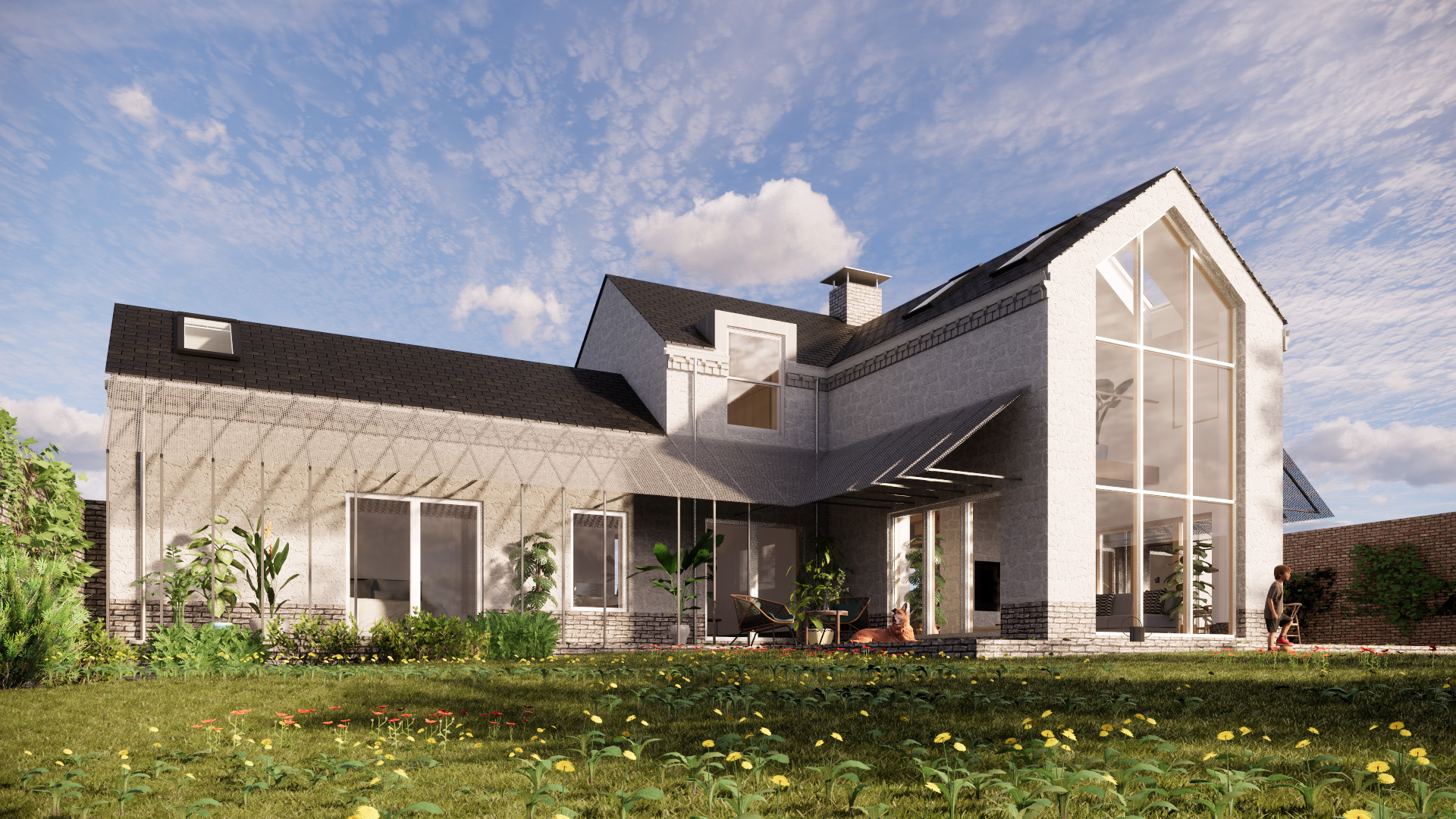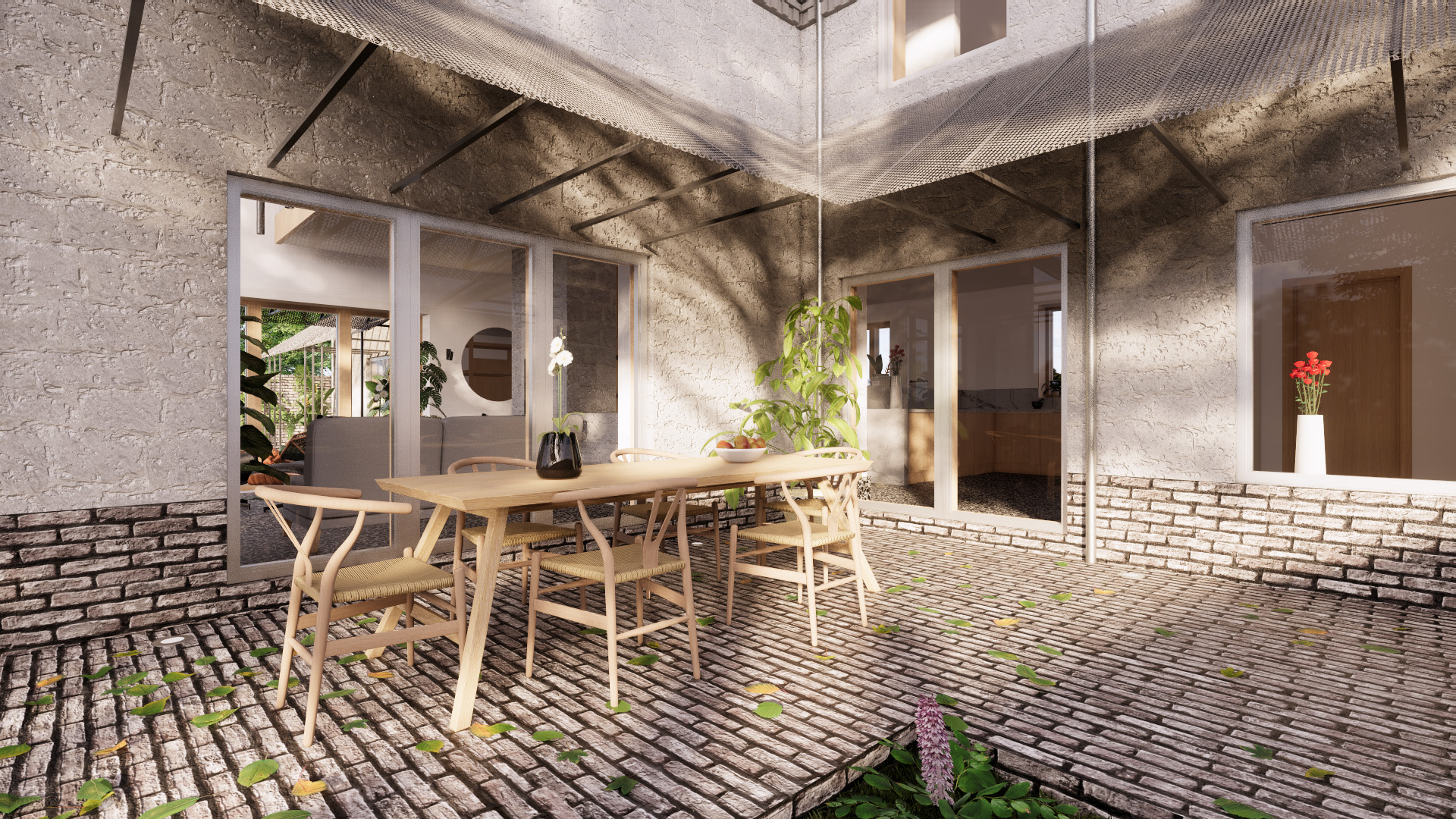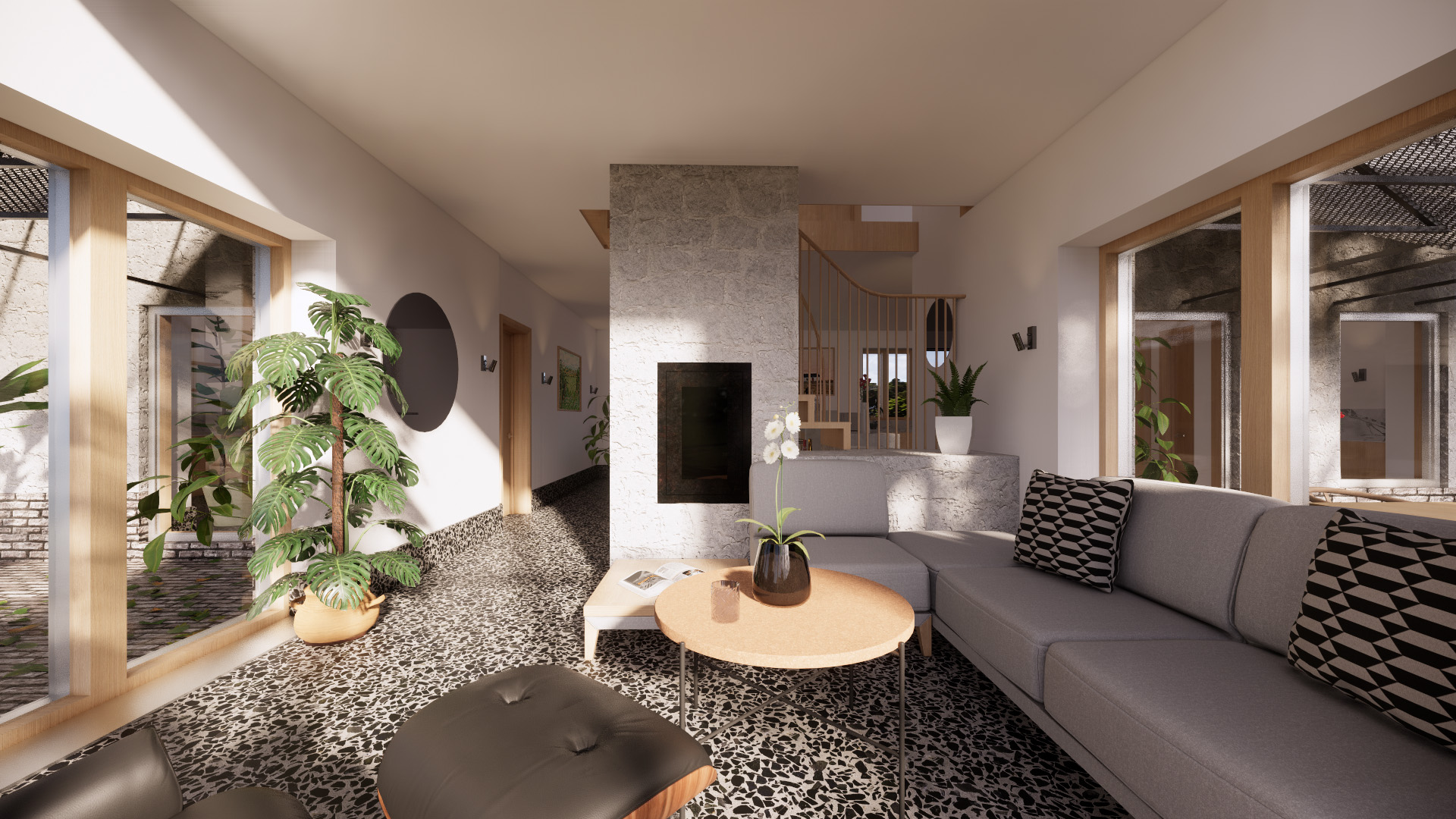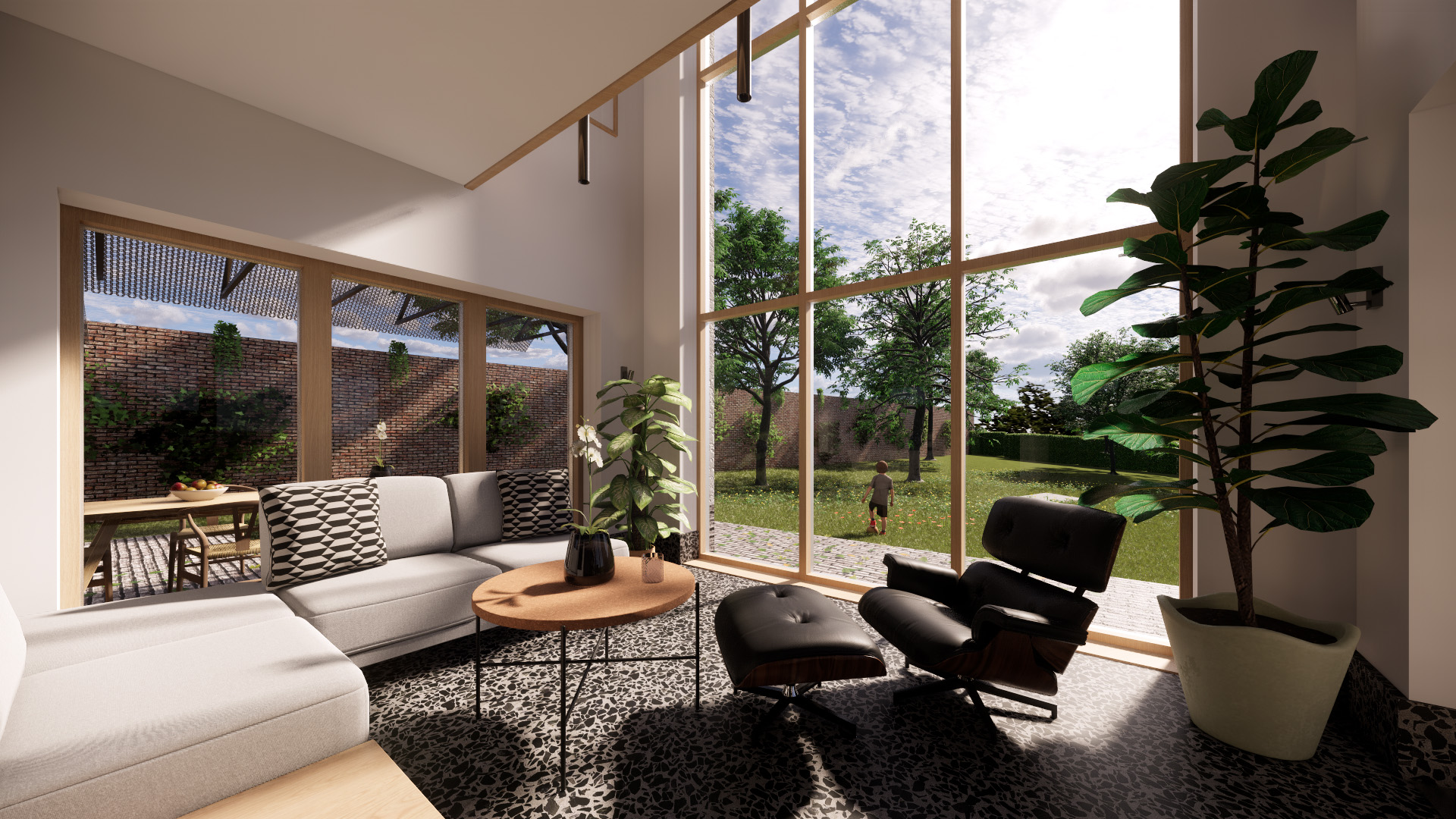East Yorkshire Passivhaus
East Riding of Yorkshire

Project Details
£250,000 to £499,999
Brownfield site
Practice
The Old Forge , Main Street , Catwick , BEVERLEY , North Humberside , HU17 5PH
Samuel Kendall Associates has received Full Planning Permission for a distinctive chalk Passivhaus family home near Bridlington on the edge of the Yorkshire Wolds. The home aims to set a new standard for healthy, sustainable living with a strong connection to nature and family life. Our project began with the dream that a home once full of family memories, childhood holidays and the joy of connecting to nature could come to life again, creating a tranquil family home, kind to the environment and celebratory of its village heritage. Once the post office cottage to the village of Carnaby on the edge of Bridlington, this site has been empty for several years. The existing cottage was in a poor condition and could not meet the complex needs of a multi-generational modern family. We have taken the careful approach to dismantle the cottage, keeping its unique masonry skin of local Wolds chalk and whitewashed brick and reusing it in the new house, lowering the embodied carbon of the project, keeping the home’s local material character and significantly lowering the material cost of the project. This home is made with the ambition of being highly sustainable, with close attention paid to its low carbon timber structure, passive solar design strategies and renewable energy systems vital to achieving an eco-friendly home meeting the Passivhaus standard. The house is arranged to maximise its relationship to a verdant, expansive garden and bring natural light into the home. A central, double-height living space creates the optimal conditions for stack effect ventilation to naturally ventilate the home. A ground floor finish of terrazzo and a central natural stone chimney create significant thermal mass in the home, stabilising internal temperatures and lowering the home’s reliance on artificial heating. A unique challenge of this project was to create a tranquil garden oasis to the south with a busy and loud road to the north. Our design is organised to act as an acoustic buffer to the busy road, stretching across the north boundary of the site. Renewable systems including an Ecodan air source heat pump, a mechanical ventilation heat recovery system and battery storage remove the home’s reliance on fossil fuel energy whilst achieving the healthiest internal environment for the family. As the UK continues to experience record summer temperatures and move from a temperate Northern European climate to a climate similar to the South of France we believe all new home’s must pay close attention to the dangers of overheating, integrating solutions into their design to minimise costs incurred in the future. This project integrates a perforated aluminium canopy across its south-facing elevation, shading the interior from the high angles of summer sun whilst permitting low winter sun to harvest solar heat in the colder months. Bi-folding doors and a south-facing veranda allow family life to seamlessly flow out into the garden, dissolving the boundary between inside and outside. Our client came to us with the vision of creating a home for their family that could set a new standard for healthy, sustainable living, with a strong connection to nature. The original cottage had been in the family for generations, hosting family gatherings and holidays but had fallen into disrepair in recent years. Our project began with the dream that a home once full of family memories, childhood holidays and the joy of connecting to nature could come to life again, creating a tranquil family home, kind to the environment and celebratory of its village heritage. A key challenge of the site was how to mediate between the loud, main road to the north and the aim of a quiet garden south of the property. We optimised the building’s long massing to act as an acoustic buffer, sheltering the tranquil garden to the south. To achieve the most environmentally friendly home we paid close attention to the embodied carbon of the project’s construction and the home’s energy efficiency, lowering the energy and heating cost in use. A key strategy to minimise the use of new carbon intensive materials was our decision to retain the chalk masonry from the existing cottage, which keeps embodied carbon low but also minimises material cost and will maintain the unique material character of the Yorkshire Wolds - a geological area noted for its white chalk. Choosing a timber frame structure allows us to use the carbon-offsetting qualities of wood to lower the project’s carbon footprint further, storing CO2 in its structural skeleton. High performance windows and insulation will be used throughout the build with close attention paid to airtightness to achieve a thermal envelope that surpasses the Passivhaus Standard. The design of this home is distinctive for its environmentally conscious approach, which aims to set a bold example for what an eco-home can offer. A distinctive material palette of chalk and whitewashed brick reinforce the home’s geological Wolds context but more importantly the reuse of this stone minimises the carbon footprint of the project and ensures the home’s construction is not detrimental to the environment. Every aspect of the design has been made with the goal of sustainability and engagement with nature and family life. The design of this home aims to update the village cottage type, not creating a home alien to its surroundings but a house that maintains the character of the village, its distinctive materials, the massing of long cottages facing out onto the street, low eaves and sliding sash windows but updating all these aspects to achieve the healthiest, environmentally friendly family home. A frame of engineered timber, prefabricated off-site, will ensure an efficient construction schedule, achieving a water-tight envelope far quicker than traditional cavity wall construction. All aspects of this home have been considered with the goal of creating a highly sustainable family home. All materials used in the home’s construction from the timber frame to the reclaimed masonry cladding have been chosen to minimise the embodied carbon of the project. The conditions for passive heating and ventilation processes including thermal mass & stack ventilation have been optimised within the home, lessening the reliance on artificial heating and air. Renewable systems of mechanical ventilation heat recovery and air source heating will ensure heat is not wasted and a healthy internal environment is achieved within the home. A filigree aluminium canopy wraps the home’s south elevation, tempering the high angle summer sun and negating any risk of overheating in the house.


